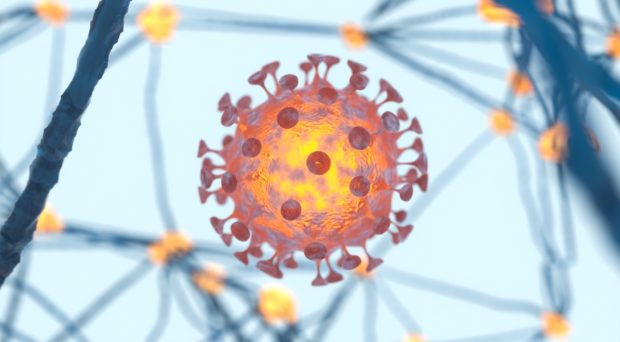
Loss of smell = brain infection? Not so fast …
It is now well-established that one of the most frequent symptoms of COVID-19 is the loss of smell. When the new coronavirus infects the nasal epithelium, does that mean that the virus can travel along the olfactory nerve into the brain? Recent publications make it sound as if this has been proven: “Olfactory transmucosal SARS-CoV-2 invasion as a port of central nervous system entry in individuals with COVID-19” and “The olfactory route is a potential way for SARS-CoV-2 to invade the central nervous system in Rhesus monkeys”. Such publications and the attention they have been getting in the media are sufficient grounds to instill fear in COVID-19 patients who have lost their sense of smell. If the virus has impaired their sense of smell, does that mean that the virus is also present in their brains – just waiting to cause brain fog, spread throughout the brain and kill the patient or, if they recover, greatly increase their chance to develop a neurodegenerative disease?
Olfaction – a portal to brain infection?
Our team of investigators from Poland, France and the USA examined the evidence that the new coronavirus infects olfactory neurons and travels along the olfactory nerve axons from the nose to the brain. There is a wide consensus that the obligatory virus entry proteins are absent in olfactory receptor neurons. Such entry proteins are expressed abundantly in the support cells, which become infected and die, thereby reducing the function of the adjacent olfactory receptor neurons. This is generally thought to cause the loss of the sense of smell in COVID-19. Within days, the support cells regenerate, the neurons resume their function, and smell returns in most patients within 1-2 weeks. Finding the new coronavirus in olfactory nerve axons is extremely rare, making this an ineffective route to brain infection.
The evidence just doesn’t add up
So why do many reports advocate an olfactory route to brain infection? One reason is that neurons and their support cells are closely intertwined, and they can easily be confused in confocal microscopy. Another reason is that the virus can indeed reach the brain, especially in genetically engineered mice where the virus entry proteins are abnormally expressed. But a careful analysis shows that the time course and itinerary of virus progression in animal models is inconsistent with a transfer from olfactory neurons in the nose to second- and third-order neurons in the brain. Instead, the data show a rare, but fulminant appearance of the virus in the brain – which suggests a route through blood vessels, the cerebrospinal fluid, or by traveling along a shortcut of nerve fibers that bypass the olfactory bulb and project directly to targets in the forebrain. We are fortunate that the lack of virus entry proteins in olfactory neurons creates an effective barrier that prevents brain infection through the olfactory pathway.

Does the virus replicate in the brain?
It should be emphasized that in contrast to some animal models, the virus is rarely found in the human brain. Furthermore, many studies relied on methods that do not prove a replicating virus, but rather detect virus RNA or viral proteins that can be shed and circulate systemically, without providing conclusive proof of brain infection. The significance of viral presence in the brain is yet unclear. Some investigators believe that infection of the brainstem and respiratory centers can contribute to fatal outcomes in COVID-19, while others note that there is no correlation between evidence of virus in the brain or cerebrospinal fluid and the severity of COVID-19.
COVID patients who have lost their sense of smell can breathe a sigh of relief. Just because their support cells in the nose have been infected does not mean that the virus has found an easy route from the nose to the brain. Our analysis of the current evidence indicates that the vast majority of COVID-19 patients will not have brain infection, even if they temporarily lose their sense of smell.
Like the blog? Now read the research:
Comments